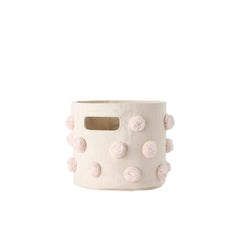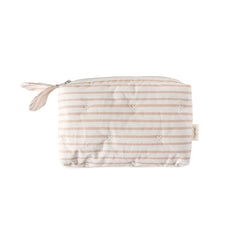The first year of your little one’s life is inevitably going to involve plenty of big transitions especially when it comes to sleep routines. One of the most significant sleep transitions is dropping your baby down from multiple naps to one nap a day. There are plenty of ways to set yourself up for success when tackling these ever-shifting schedules. One of the most important keys to success is beginning your transition at the right time. So, when do babies drop to one nap? How will you know when your child is ready? And, how can you make the transition as seamless as possible? Great questions. We’ve collected all the answers for you! Let’s dive into everything you need to know about dropping to one nap.
Table of Contents
- When do babies drop to one nap?
- How to know when to drop a nap?
- Tips and tricks for transitioning your baby to one nap
When do babies drop to one nap?
Most parents begin to transition their babies to one nap a day somewhere around the one-year mark. Some babies might be ready to drop a nap as early as 10 months, although this is quite rare. Other babies might be better off waiting until 12 - 16 months. By around 18 months, most parents who have yet to drop a nap will often start noticing insomnia or early waking problems. So, within this 10 - 18 month range, how do you know when it’s the right time for your child to drop a nap? We’ll share some tell tale signs that your baby is ready.

Henley Patch Pocket Romper - Rush Hour
How to know when to drop a nap
So you think your little one is ready to drop a nap, but you’re not quite sure if the timing is right. The good news is that there are plenty of signs you can look out for. In other words, your baby will tell you when they’re ready. All you have to do is tune into the signals. Here’s what to look for.
Signs to drop a nap
- Nighttime sleep is decreasing. If you’re noticing that your baby is sleeping less than 10 hours/night, this is a good indication that it’s time to decrease daytime sleep hours to encourage a longer stretch of sleep at night.
- Nighttime insomnia is increasing. If your baby is experiencing 1.5 - 2+ hours of insomnia several times a week this is another great indication that your little one is ready to drop a nap.
- Bedtime is later than 9 PM. Ideally, you want your one-year-old’s bedtime to be around 7 - 7:30 PM unless you’ve intentionally set it later for a specific reason. If you can’t get your child down at this time it might be because they are getting too much sleep during the day.
- Naps are being skipped more than 4 times/week. If your little one is skipping naps and you’re not noticing an increase in fussiness, tiredness, or irritability, try dropping a nap.
If you are seeing several of the above signs consistently for more than two weeks, it’s a great indication that your child is ready to drop a nap. Knowing when to tackle this transition is half the battle! But, don’t worry we’ve included a few tips and tricks on how to tackle the transition too. Read on!

Kimono Romper - Follow Me Whale
Tips and tricks for transitioning your baby to one nap
Now that you’ve determined that your baby is ready to drop a nap and you’re ready to begin the process, here are a few tips and tricks that can help make the transition as easy as possible:
- Baby steps. They don’t call them baby steps for nothing so don’t expect to tackle this transition in one day. Your baby may go back and forth between one nap and two naps for a few weeks and that’s totally fine! It might even help make the transition easier so take your time and be patient.
- Set your baby up for success. Build a bedtime ritual that is soothing and relaxing for your baby. Try a warm bath with baby-friendly lavender or chamomile wash. Finish off by wrapping them in a cozy towel. Make sure you have some cozy, and comfortable pajamas on hand post-bath and a sleep bag if your child is used to sleeping with one. Cuddle up in a cozy blanket for some storytime and dim the lights.
- Move naptime and bedtime. Once you drop a nap, you may need to rejig your little one’s sleep schedule. With fewer daytime sleep hours, you may need to move bedtime earlier. Some parents also find that slowly pushing the morning nap back by 15 or 30 minute increments until it becomes a post-lunch nap can also be helpful.
- Incorporate quiet time. With a second nap gone you may notice that your child is a little fussier, especially during and shortly after the transitional period. Replacing the second nap with some quiet time can help ensure that your child doesn’t become overstimulated or overtired. Quiet time might involve a white noise machine, a baby massage, or quiet reading time.
- Encourage a longer nap. If you had been waking your child up from naptime before you can probably stop doing that once your baby drops to one nap a day. Ideally, if you can get your little one to sleep for 2 - 3 hours at naptime, you’ll set them up for a great night’s sleep and help them avoid becoming overtired.

It can be quite challenging to master sleep routines in the first year of life, but tuning in to your child’s signals and cues can help you tackle transitions at the right time. So often, this is half the battle. We hope that you now feel well equipped to catch the signs that your baby is ready to drop a nap and take another exciting step towards becoming a big kid!






